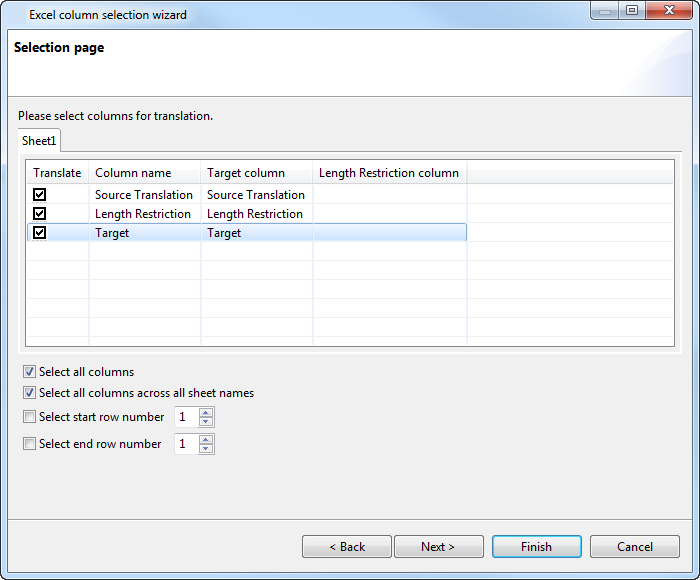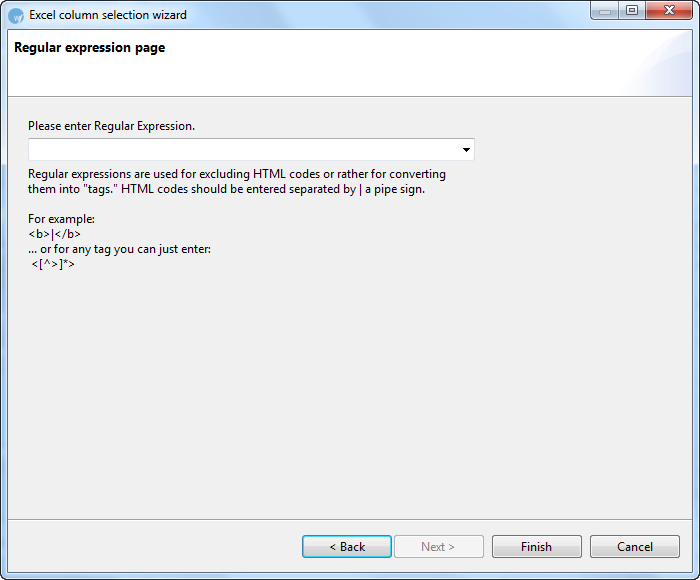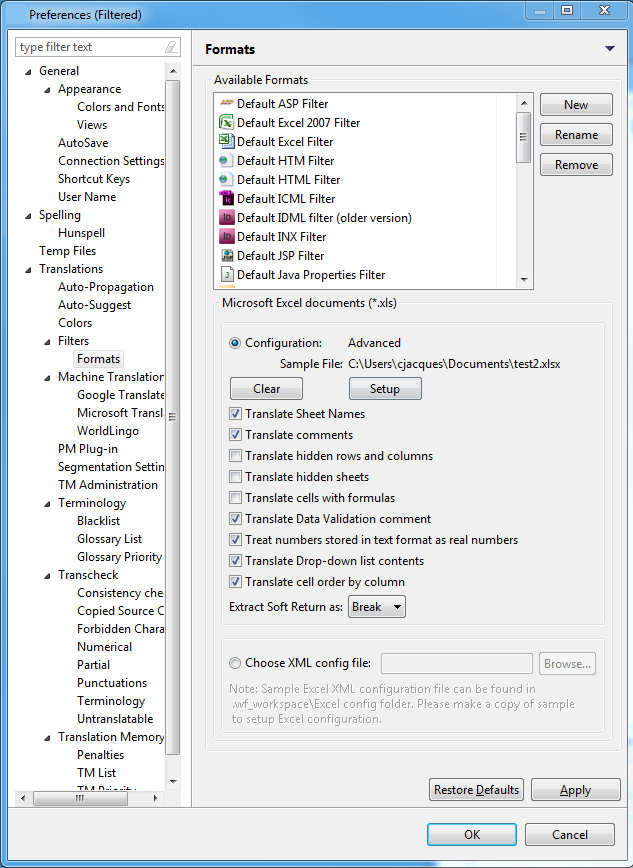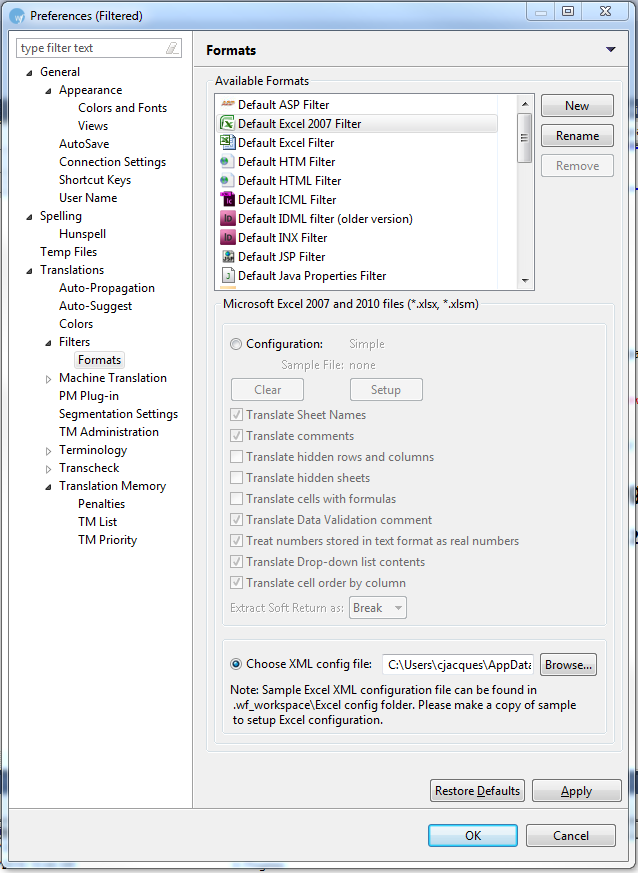Follow steps 1 to 6 from Adding an Excel file filter.
Select Simple Wizard and click
Next.
The Preview page appears.
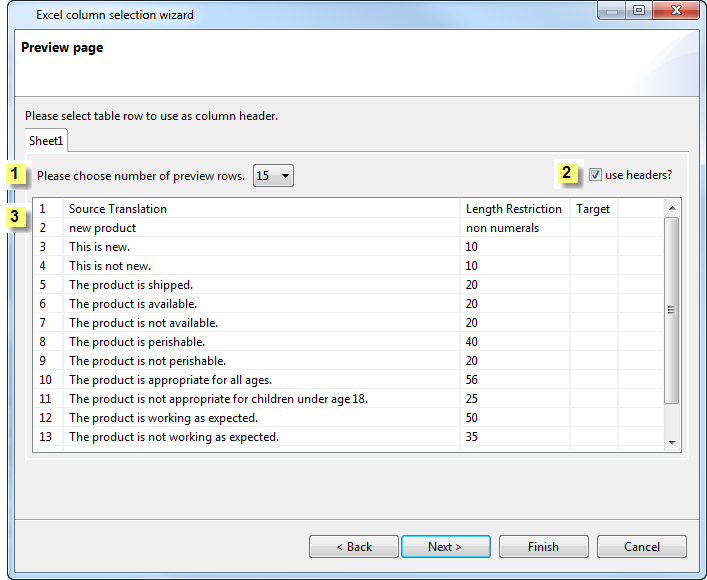
The content in the Preview page is selected for translation. The Preview
page models an Excel file.
Number |
Use |
to |
|
Please choose number of preview rows drop down list |
select the number of rows to show on the preview page. |
|
Use headers check box |
use the column headers of the Excel sheet. If not selected, the column letter (A,B, C) appears in the next step. |
|
Table with the Excel sheet contents |
select the first row for translation. Rows above the selected row will not be translated. |
Click Next.
The Selection page appears. If you have selected the Use header checkbox,
the Excel sheet headers appear as column names, in the Column Name
column. In the example below, the Excel sheet headers are Source Translation,
Length Restriction, and Target. An example of the source Excel spreadsheet
appears below.
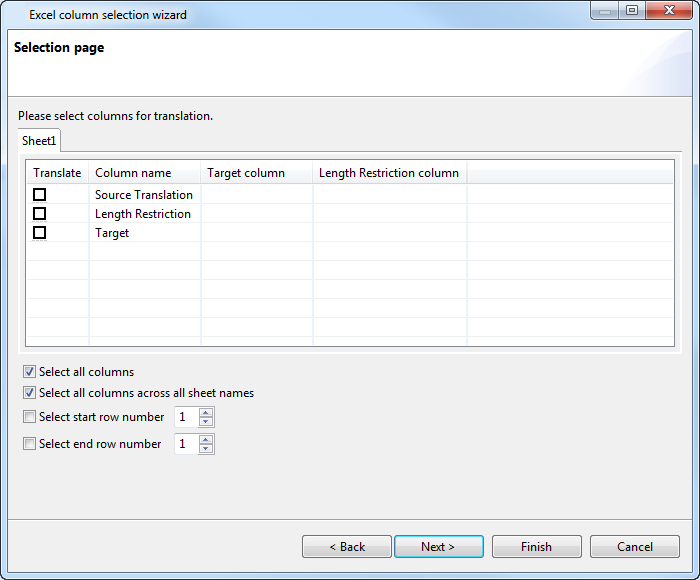
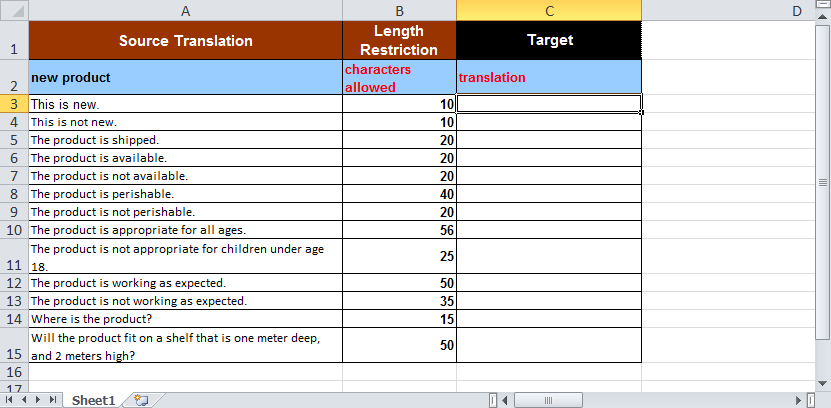
In the Translate column on the Selection page, select the columns for translation.
